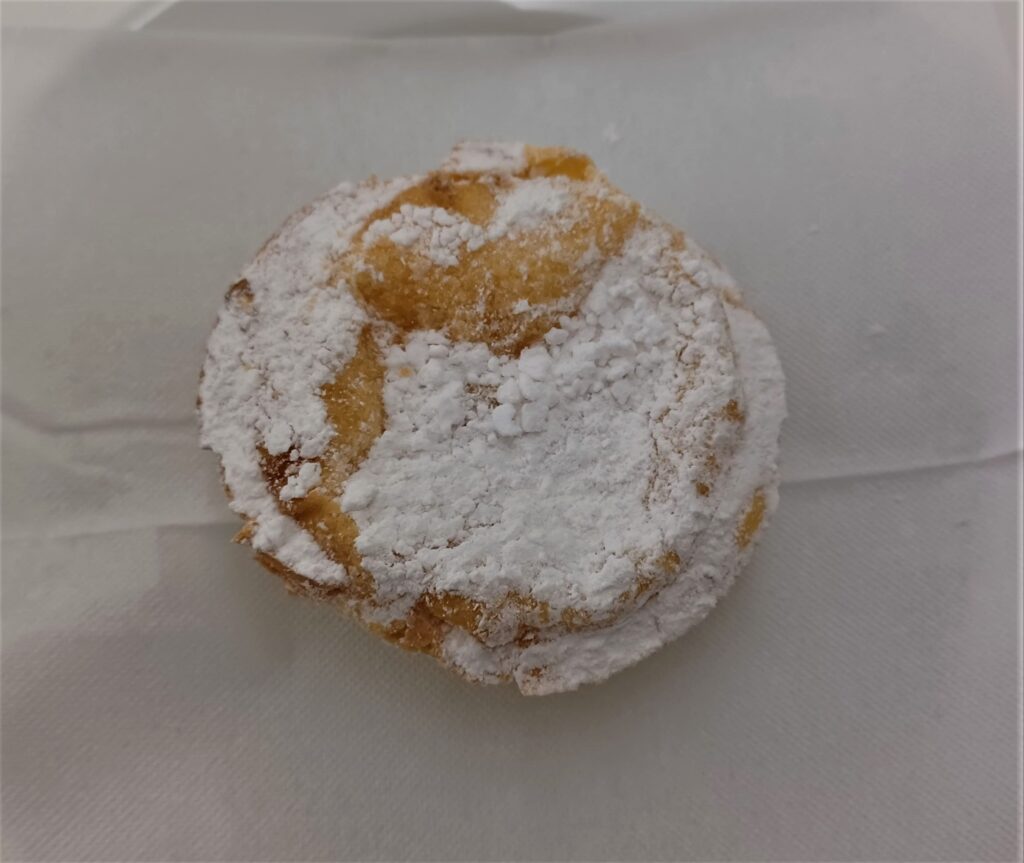Braga, Portugal is known for its churches and sweets. Those two things come together in the many Convent Sweets in the city.
Convent Sweets origin story
In Portugal, many of the best known pastries were invented in the country’s convents. Monks at Lisbon‘s Jerónimos Monastery, using sugar from the slave plantations in the Portuguese colony of Brazil, created the famous Pastel de Nata. But, monasteries and convents all over Portugal created their own distinctive treats. And, in Braga, there are several to choose from.
Sameirinhos
Braga has a history as a pilgrimage site for Christians because of its link to Christianity dating back to the first century. Churches, many of them magnificent works of art in their own right, dot the city and the surrounding landscape.
Perhaps best known is the Bom Jesus do Monte. This church is perched on a hilltop with a jaw-dropping ornate staircase leading to it.
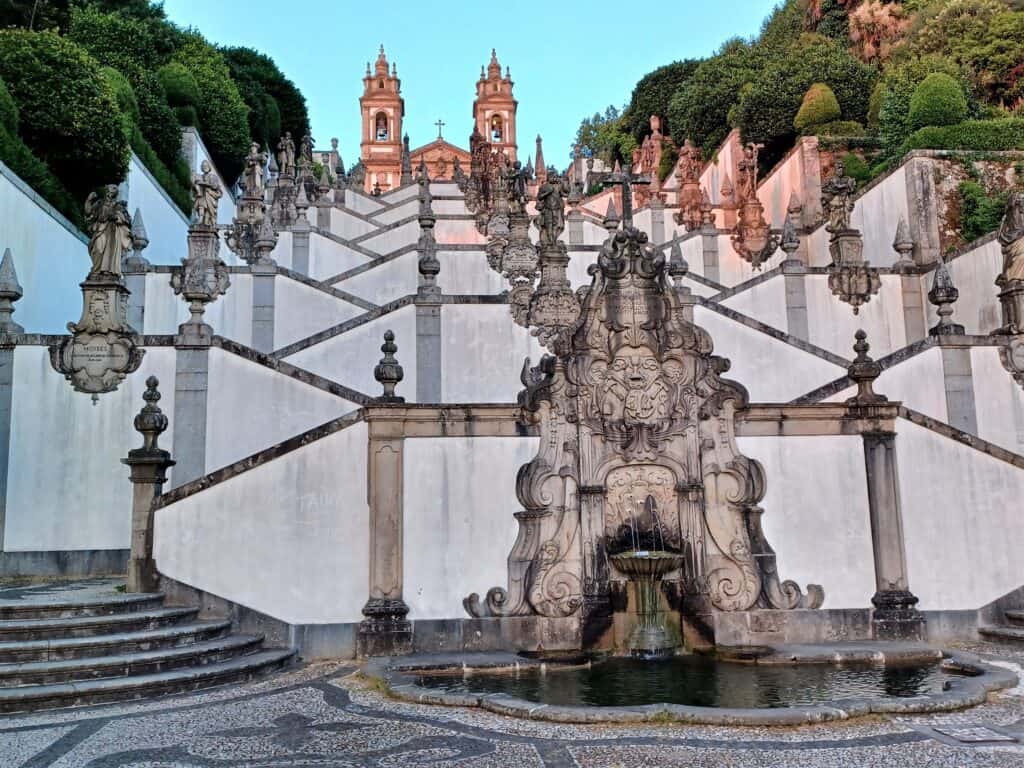
Like Bom Jesus do Monte, Santuário de Nossa Senhora do Sameiro (Sanctuary of Our Lady of Sameiro), is also a couple miles outside Braga. It is also on a hilltop with equally fastastic view (some say they’re even better than Bom Jesus).
The nuns of the Santuário de Nossa Senhora do Sameiro invented Sameirinhos. The pastry shell resembles a small boat which is filled with egg and almond custard. Ferreira Capa makes delicious Sameirinhos. Pastalaria Veneze also has their own spin on Sameirinhos with a bowl shaped crust rather than the traditional boat shaped one.
Pudim Abade de Priscos
A few miles southwest of Braga is the parish of Priscos. In the 19th century Manuel Joaquim Machado Rebelo, the so-called Abbot of Priscos invented the Pudim Abade de Priscos.
The sweet dish is a typical custard caramel pudding, made with egg yolks and simple syrup flavored with lemon zest and cinnamon. However, two ingredients are added that make Pudim Abade de Priscos anything but typical.
Pork fat or bacon is added to the simple syrup which gives the pudding its velvety texture. And, port wine, which was a unique ingredient to sweets in the 19th century, is added.
Originally, Pudim Abade de Priscos was made for the King of Portugal. Today, pastelarias all over Braga offer the sweet treat. But, vegetarians and those with a religious prohibition to pork fat makes this a no-go for them.
Viúvas
Viúvas is a custard tart made from egg yolks, sugar, and almonds. The recipe originated at the long-gone Convento dos Remédios in Braga. The recipe was forgotten, only to be recently revived by local bakeries.
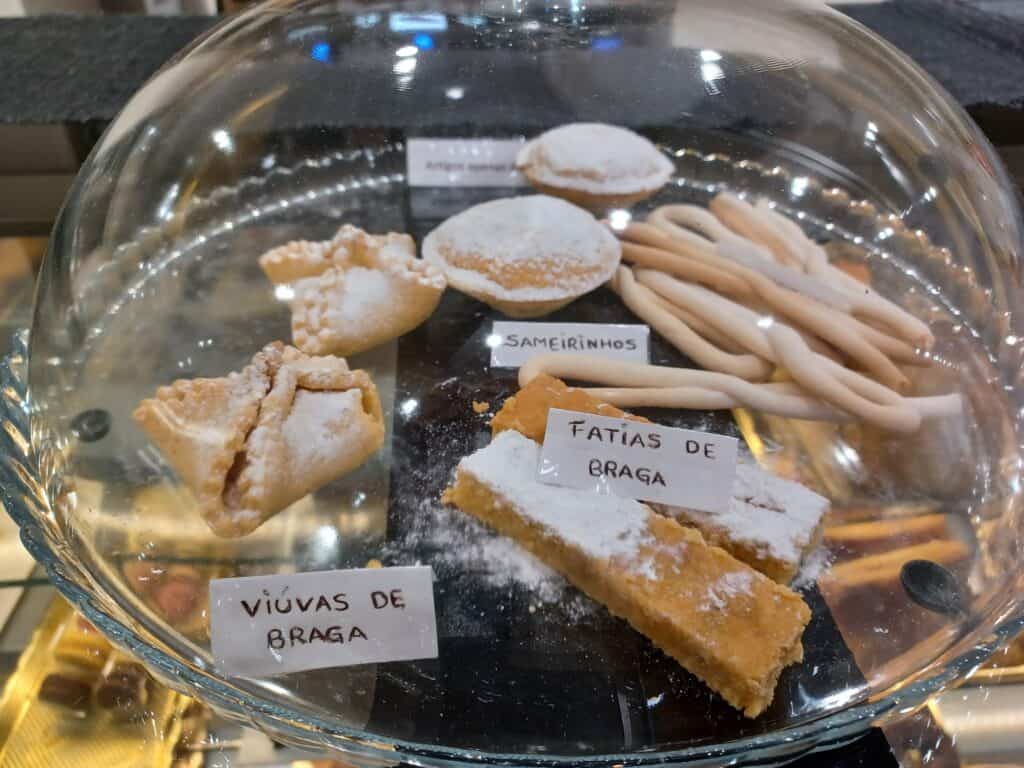
Or that’s what I heard. I must’ve visited a dozen pastelarias in Braga that supposedly had Viúvas on the menu. None had it. A couple said “maybe tomorrow,” but tomorrow came and still no Viúvas.
The closest I came was at Pastelaria Veneza. They had Viuvus on a display stand under glass. I asked for it and they said it was just to look at, not for sale. Denied!
Jardim de Santa Bárbara (Garden of Santa Barbara)
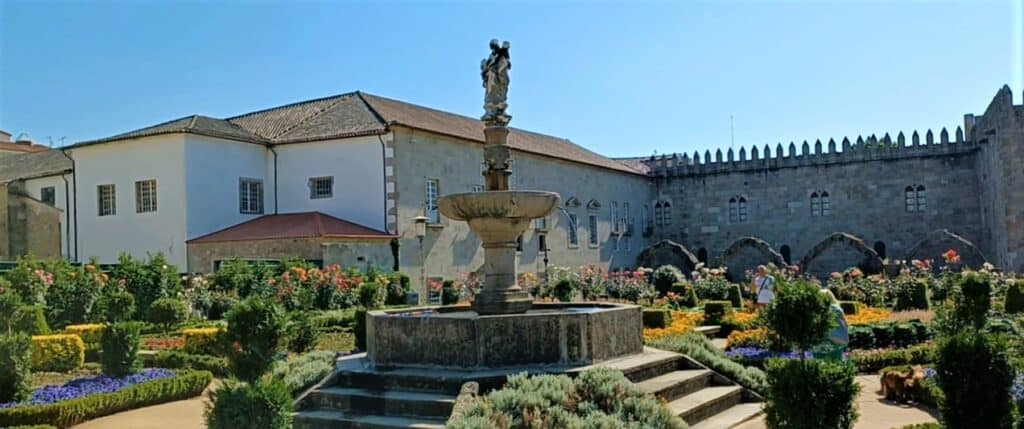
The Garden of Santa Barbara is a lovely little formal garden in the middle of the city. The flowers are well maintained by the city with annual blooms regularly changed to keep the colors going all year.
The garden abuts the ruins of a Medieval arcade and behind that is 14th century Gothic eastern wing of the Episcopal Palace. The palace is currently part of the University of Moinho and isn’t open to the public.
The centerpiece of the garden is the Fountain of Santa Barbara. Originally, the fountain resided in the Convento dos Remédios, yes, the same convent where the elusive Viúvas pastry was invented. Before the convent was destroyed (there’s a theater where the convent once stood), the fountain was removed and is now enjoyed by everyone who visits the garden.
I like to imagine the nuns enjoying a Viúvas while sitting near the fountain in the convent’s cloister.
Tibias
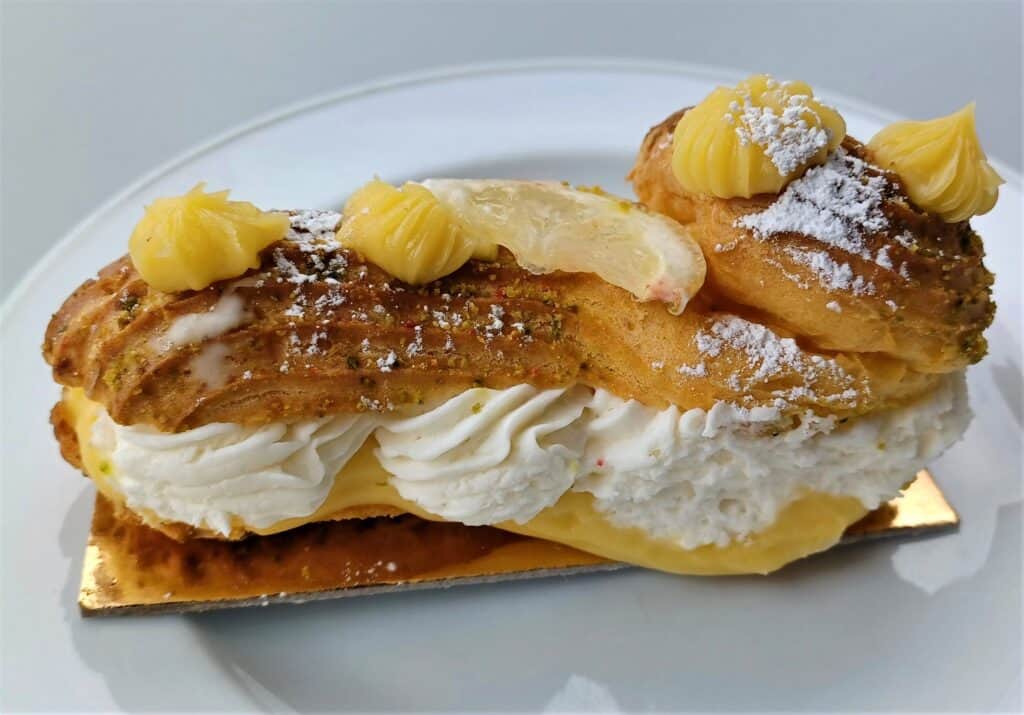
The Tibias was invented in a convent in Braga, or so the story goes. That’s because there is little to no information regarding the who, when, and where of this sweet delight.
The Tibias is named for its resemblance to the tibula leg bone, though some might joke that it resembles another part of the anatomy. Of course I’d never think of making such a crude joke.
The Tibias resembles an Éclair with a long piece of fried dough filled with cream, custard, or jam. There are important differences between the Tibias and Éclair. These differences are what makes a Tibias better than an Éclair, IMHO.
Dough for a Tibias is normally fluted with ridges so when it is fried it becomes much crispier. The Tibias also has a larger variety of fillings like lemon curd, hazelnut, and strawberry cream in addition to the traditional cream filling.

You’ll usually see a Tibias sprinkled with powdered sugar. Fancier versions might have fresh fruit and even more cream on top.
Where to get a Tibias
Braga’s most well-known spot for Tibias is Tíbias de Braga. When you’ve got Tibias in your name, it better be good, and Tíbias de Braga delivers. They have a wide variety with lots of flavor options. I really like the lemon one. They’ve also got a divine cappuccino Tibias.
My favorite spot to get Tibias is Ciccoria Caffè. They have a great location right off the Praça da República. Their Tibias are fresh and absolutely scrumptious!
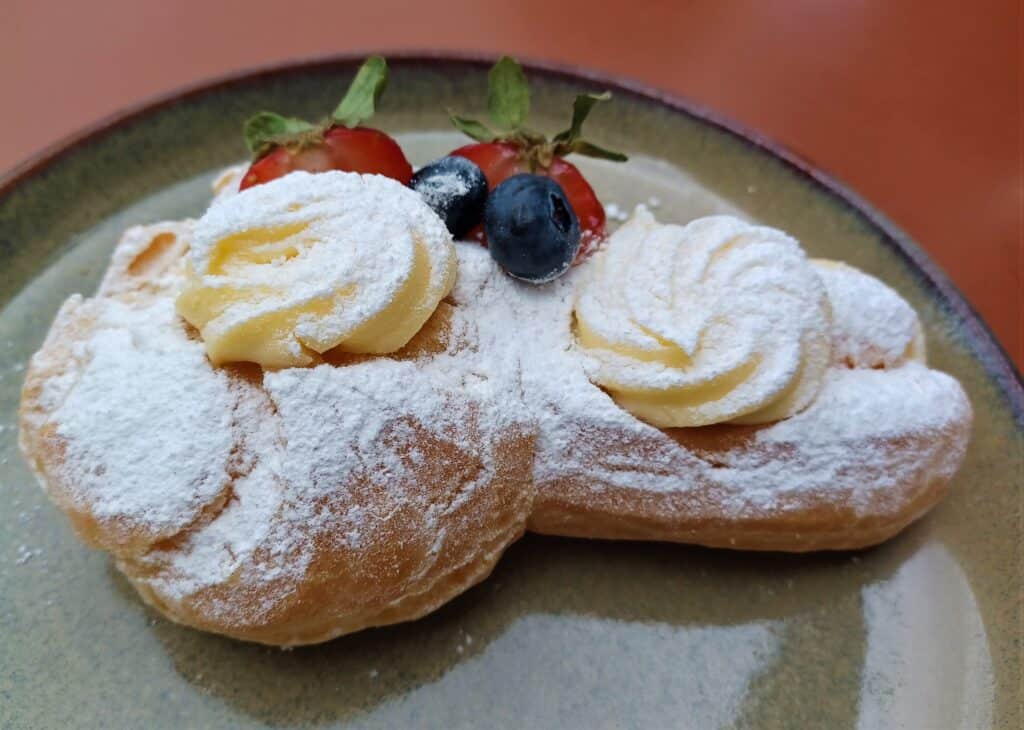
About the Author

Brent Petersen is the Editor-in-Chief of Destination Eat Drink. He currently resides in Setubal, Portugal. Brent has written the novel “Truffle Hunt” (Eckhartz Press) and the short story collection “That Bird.” He’s also written dozens of foodie travel guides to cities around the world on Destination Eat Drink, including in-depth eating and drinking guides in Portugal to Lisbon, Porto, Sintra, Monsaraz, and Batalha. Brent’s podcast, also called Destination Eat Drink, is available on all major podcasting platforms and is distributed by the Radio Misfits Podcast Network


